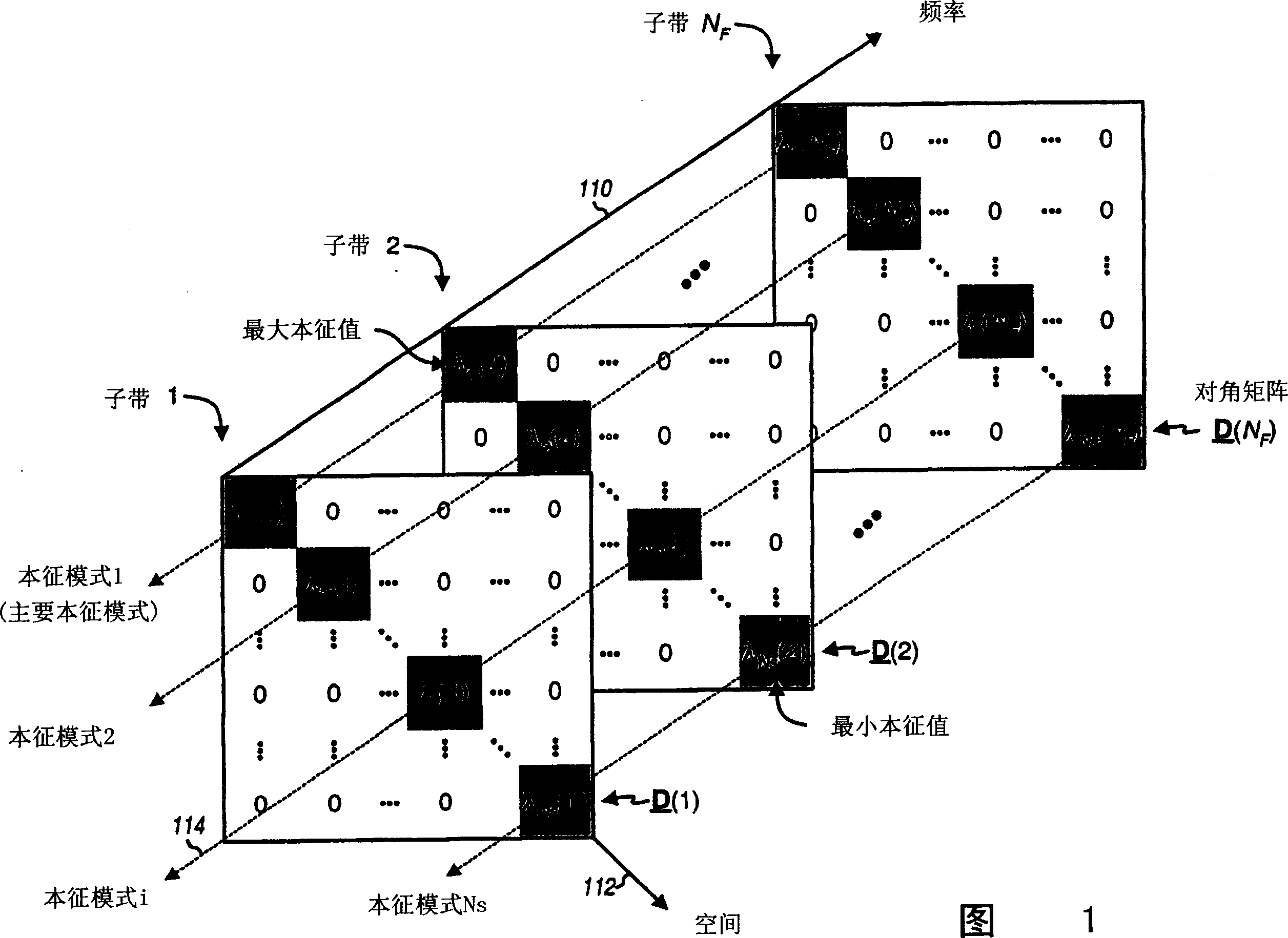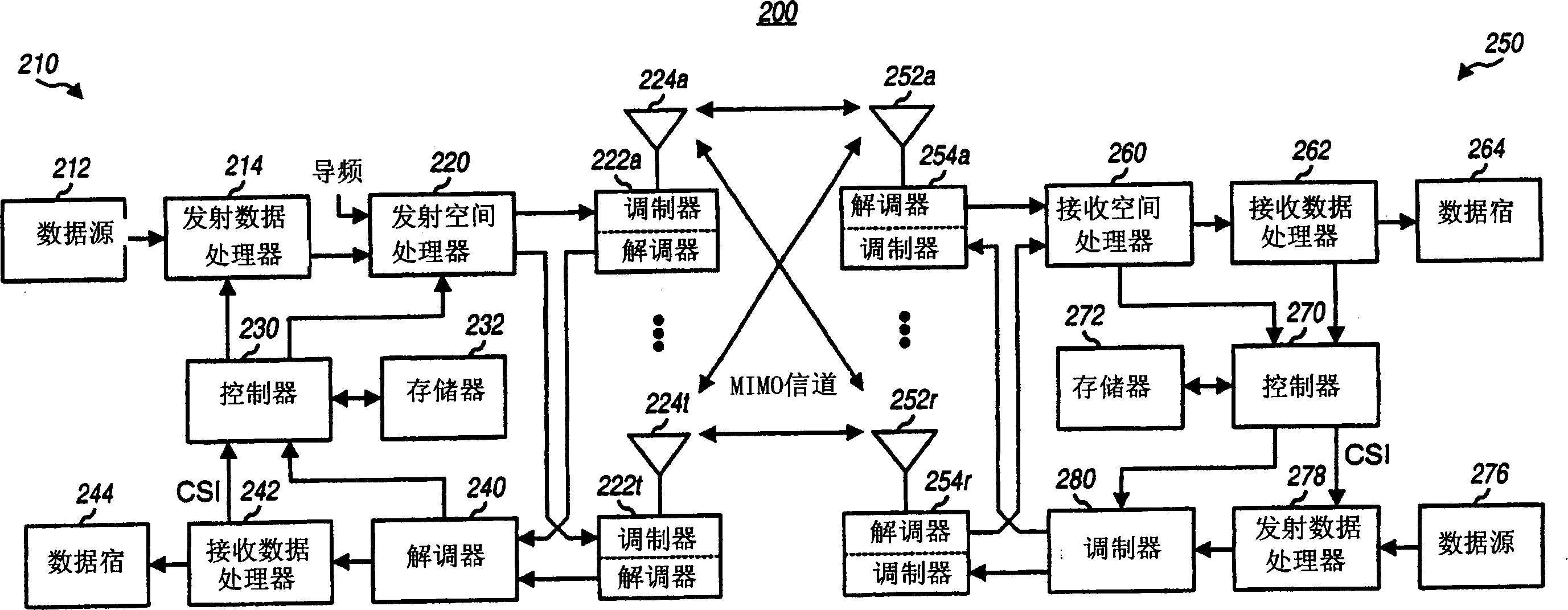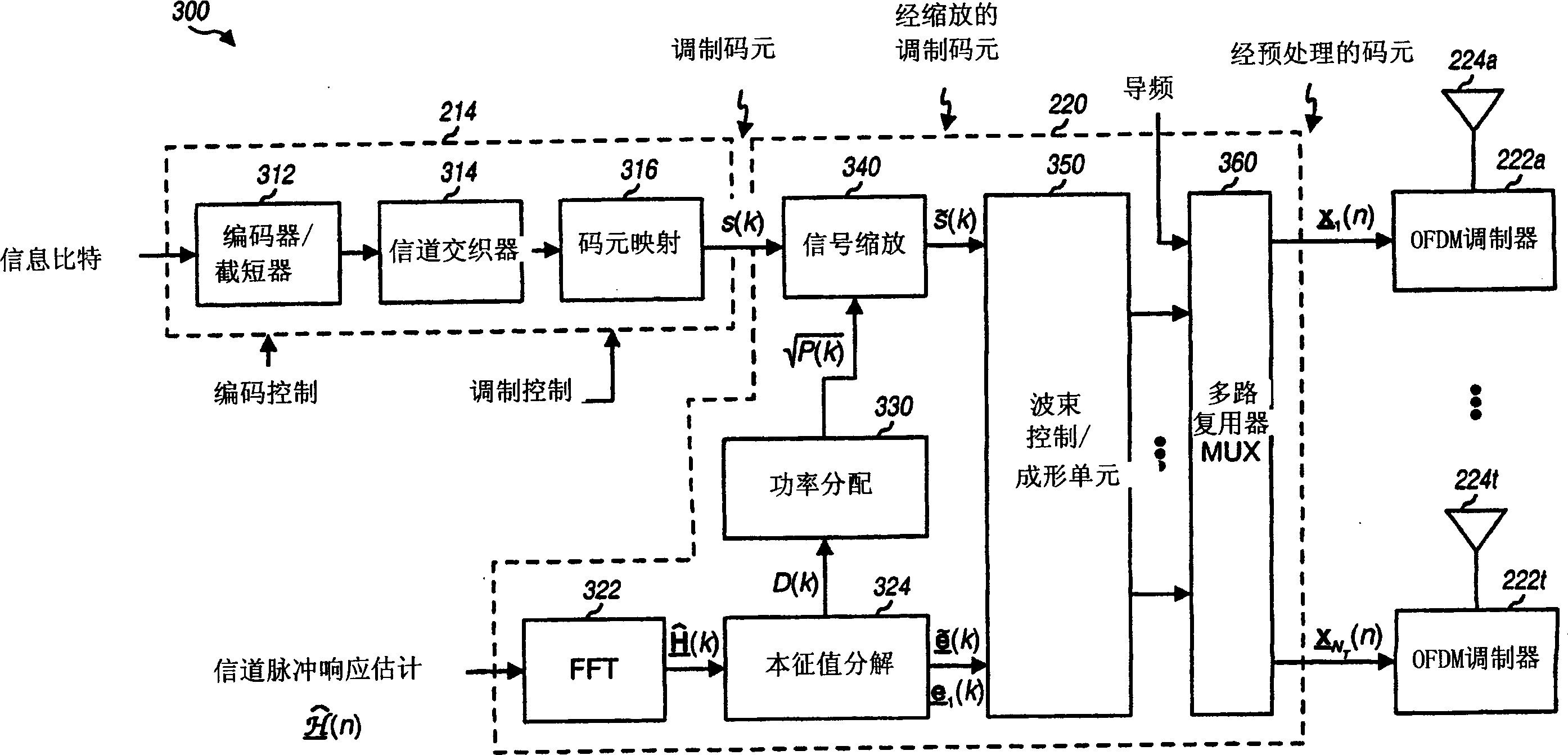Beam-steering and beam-forming for wideband MIMO/MISO systems
A wideband, control vector technology, applied in the field of data communication, which can solve the problems of degradation, channel condition deterioration, etc.
- Summary
- Abstract
- Description
- Claims
- Application Information
AI Technical Summary
Problems solved by technology
Method used
Image
Examples
Embodiment Construction
[0020] The beam steering and beamforming techniques described herein can be used in various wideband MIMO / MISO communication systems. For brevity, these techniques are described specifically for a MIMO-OFDM system that effectively divides the total system bandwidth into N F an orthogonal subband.
[0021] The model of MIMO-OFDM system can be expressed as:
[0022] y (k)= H (k) x (k)+ n (k) for k ∈ {1,...,N F}, Formula 1)
[0023] in y (k) is N via the kth subband R The number of symbols received by the root receiving antenna is N R items{y i (k)} (for i∈{1,...,N R}) (i.e. the "receive" vector);
[0024] x (k) is for N from the kth subband T The number of symbols sent by the root transmitting antenna is N T item{x j (k)} (for j∈{1,...,N T}) (i.e. the "send" vector);
[0025] H (k) is a term {h ij (k)} (for i∈{1,...,N R} and j ∈ {1,...,N T}) of (N R ×N T ) channel response matrix, these entries are N from the kth subband T root transmit an...
PUM
 Login to View More
Login to View More Abstract
Description
Claims
Application Information
 Login to View More
Login to View More - R&D
- Intellectual Property
- Life Sciences
- Materials
- Tech Scout
- Unparalleled Data Quality
- Higher Quality Content
- 60% Fewer Hallucinations
Browse by: Latest US Patents, China's latest patents, Technical Efficacy Thesaurus, Application Domain, Technology Topic, Popular Technical Reports.
© 2025 PatSnap. All rights reserved.Legal|Privacy policy|Modern Slavery Act Transparency Statement|Sitemap|About US| Contact US: help@patsnap.com



